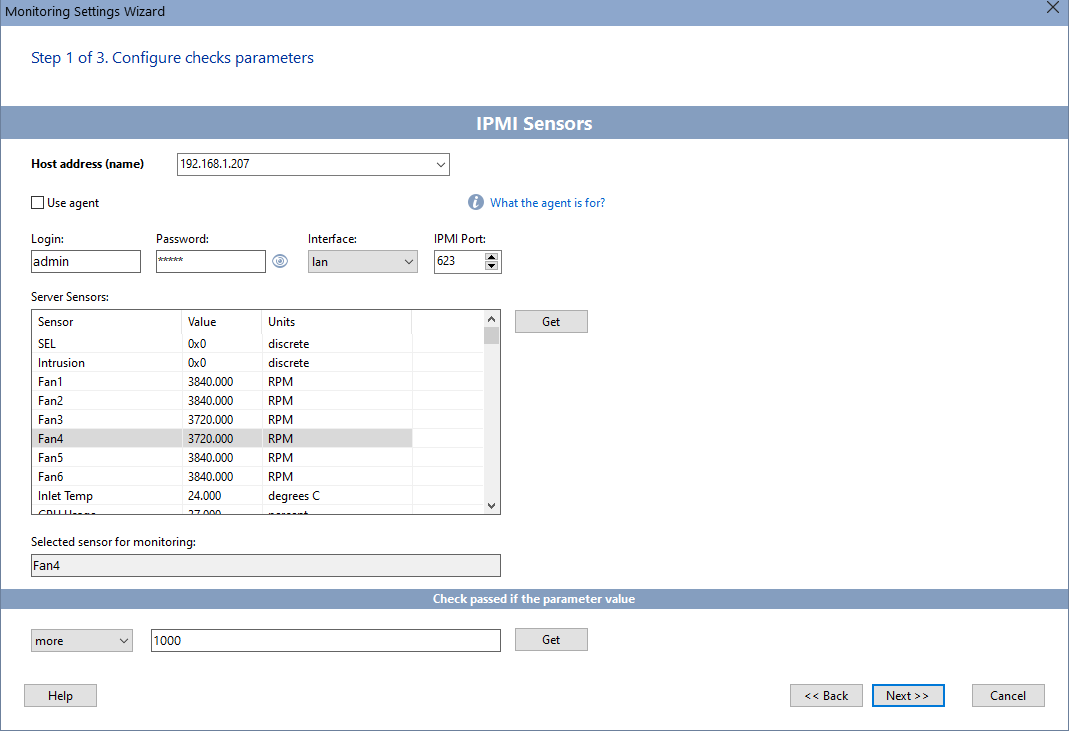IPMI (Intelligent Platform Management Interface) is a standard for remote management and monitoring of server hardware. It allows administrators to access and manage the server regardless of the operating system state, including turning it on, off, rebooting, and monitoring various parameters such as temperature, voltage, and fan status (fan speed/RPM).
The program can access this information both with the installed agent (in the Pro version) and without it. Monitoring server parameters via IPMI will help you quickly find out, for example, that the server's cooling system has failed, and prevent further consequences of overheating. To configure monitoring of one of the parameters, you must first select it from the list of available ones that can be received by the program. This check is resource-intensive, so you should not create too many checks that receive data from one agent with a small polling interval. The recommended interval is starting from 30 seconds.
This check can work with servers running any operating system, if they have a management controller, usually called BMC (Baseboard Management Controller). It is built into the server's motherboard. The BMC has its own network interface and can work even when the main server is turned off.
Data from the server's BMC can be obtained both remotely, over the network, and locally using the agent installed on the server (in the Pro version).
To configure the check, you need to specify the login and password for access to the BMC, select the interface (most often lan or lanplus is used) and set the IPMI port (623 by default). Next, get a list of server sensors available for monitoring (click the Get button). This process can take a long time (up to a minute). After that, you need to select the required sensor and set the threshold value of its parameter.
